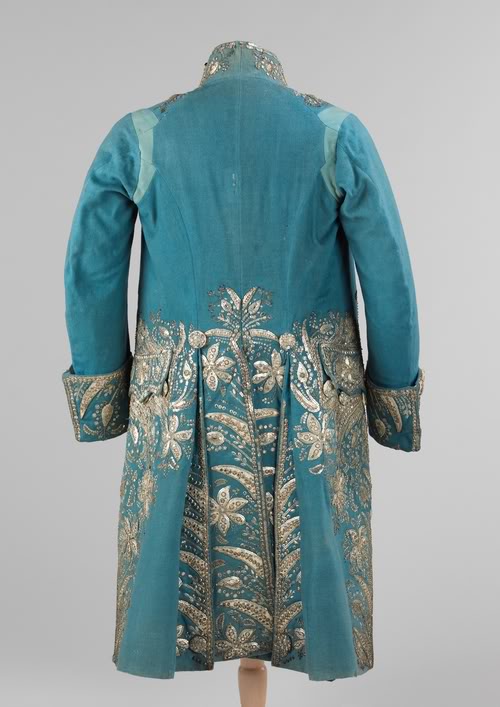Through the skilled labors of the workers in embroidery ateliers all over Europe, this singular art form reached its apex, for men. Employing classical techniques of application, and relying mostly on natural forms like plant life, the range of color, and expression was vast. But it wasn't confined only to swags of flowers, clusters of leaves, or sheaves of wheat. These amazing artisans employed broad metallic threaded trimmings and laces, paste stones and sequins, to accomplish their goals.
The three piece ensemble of coat, breeches, and waistcoat were a virtual uniform for most men, and even less advantaged males could usually afford some sort of decorative work on their clothing. So it required innumerable talented embroidery workers in thousands of establishments to keep up with the demand. The result is that we are gifted with a great many remaining examples of their design genius. And for those with the right sort of education, steeped in classical literature and mythos, these garments frequently spoke more eloquently, as they often had symbolism crafted right into the decoration of their pocket flaps, and sleeve cuffs.
It makes me pine for time travel, in part because I would love to own and wear things like this my very self. But also, I would love to be able to ask the men who wore these things how it made them feel to walk about so attired. Were they invested simply by putting these clothes on, with a greater confidence, a surety of themselves and their place in society? Did they feel powerful, beautiful, and emboldened? I would imagine the answers would be universal yeses, but I wanna know.
Here is a small sampling of the broad range that existed. The quality of the decorative work ranges broadly from competent to master class. The end result, however is uniformly breathtaking.
Gobsmacking.












Lovely....
ReplyDelete